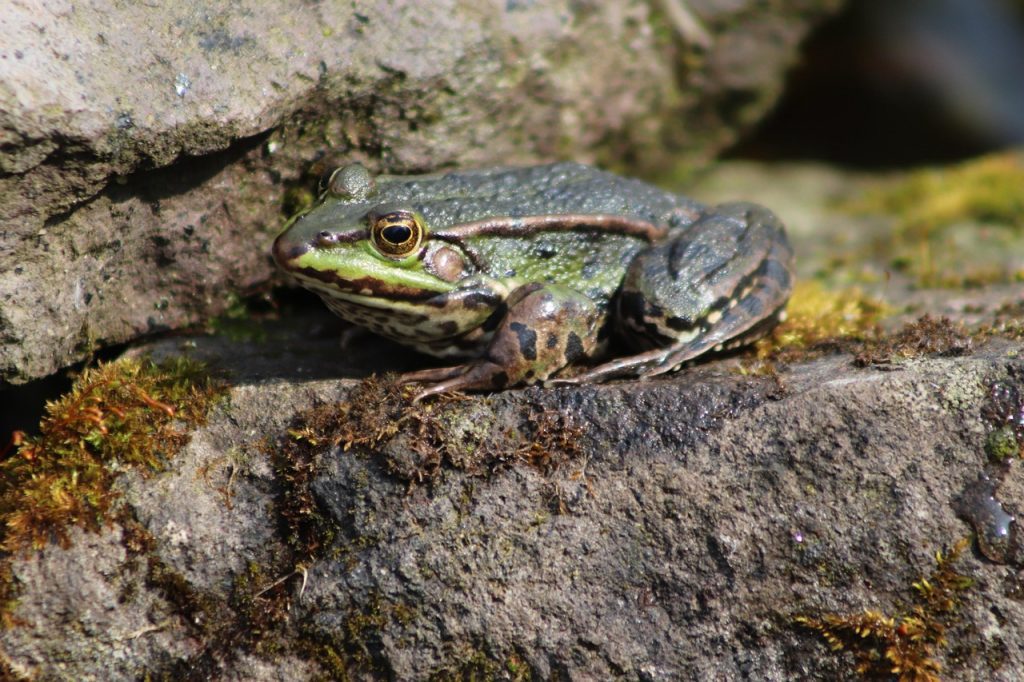Every year on March 20, we celebrate World Frog Day, a day dedicated to raising awareness about frogs and why they need our help.
Frogs may seem small and ordinary, but they play a huge role in nature.
Unfortunately, many frog species are in danger due to habitat destruction, pollution, disease, and climate change.
In this article, we’ll cover:
- Why frogs are important.
- The biggest threats they face.
- What’s being done to save them.
- Simple ways you can help.
Why Are Frogs Important?
Frogs are more than just creatures that hop around and croak at night.
They play three key roles in the environment:
1. Frogs Keep Insect Populations Under Control:
Frogs eat a huge number of insects, including mosquitoes, flies, and pests that damage crops.
Without frogs, insect populations could explode, leading to more disease and agricultural damage.
2. Frogs Are Food for Other Animals:
Many birds, fish, snakes, and mammals rely on frogs as a food source.
If frog populations disappear, it will disrupt the food chain and harm many other species.
3. Frogs Indicate Environmental Health:
Frogs have thin, sensitive skin that absorbs substances from their surroundings.
This makes them early warning indicators of pollution and climate change.
When frog populations decline, it’s often a sign that the environment is in trouble.
The Global Frog Crisis: Why Are Frogs in Danger?
Frog populations are shrinking worldwide, and some species have already gone extinct.
Here’s why:
1. Habitat Destruction:
As cities expand, forests are cleared, and wetlands are drained, frogs lose their homes.
Without safe places to live and breed, many species struggle to survive.
2. Pollution:
Pesticides, industrial waste, and plastic pollution contaminate water sources.
Since frogs absorb water through their skin, these toxins can poison them or cause serious health issues.
3. Climate Change:
Changing temperatures and weather patterns affect frog breeding cycles and food availability.
Some frogs are struggling to adapt, leading to population declines.
4. Deadly Diseases:
A fungal disease called chytridiomycosis has wiped out entire frog populations.
The fungus infects their skin, preventing them from absorbing water and essential nutrients, eventually causing death.
5. Invasive Species:
Non-native animals, like certain fish and toads, eat frog eggs and tadpoles, reducing their numbers.
Some invasive species also compete with frogs for food and habitat.
How Scientists and Organizations Are Helping
Thankfully, conservationists are working to save frogs before it’s too late.
Here’s how:
1. Protecting and Restoring Habitats:
Governments and conservation groups are setting up protected areas where frogs can live safely.
They are also restoring damaged wetlands and forests to give frogs a better chance of survival.
2. Breeding Programs and Disease Research:
Scientists are breeding endangered frogs in captivity and releasing them back into the wild.
Research is also underway to find treatments for deadly fungal infections like chytridiomycosis.
3. Raising Awareness and Education:
Groups like SAVE THE FROGS! and Amphibian Ark are educating people about the importance of frogs and encouraging action.
Schools, zoos, and nature centers are also getting involved.
4. Reducing Pollution and Climate Change:
Efforts to cut pollution, reduce pesticide use, and fight climate change all help frogs.
Many conservationists are pushing for stronger environmental laws to protect amphibians.
How You Can Help Frogs
You don’t have to be a scientist to make a difference.
Here are some simple ways to help:
1. Create a Frog-Friendly Space:
- If you have a backyard, build a small pond where frogs can live and breed.
- Plant native plants to attract insects that frogs eat.
- Avoid using pesticides—they can poison frogs and their food sources.
2. Reduce Plastic Waste:
- Avoid single-use plastics that pollute water sources.
- Recycle and properly dispose of plastic waste to keep it out of frog habitats.
3. Support Frog Conservation Groups:
Organizations like SAVE THE FROGS!, Amphibian Ark, and Rainforest Trust work to protect frog species worldwide.
Donating, volunteering, or even just spreading the word can help their efforts.
4. Reduce Your Carbon Footprint:
Climate change is a major threat to frogs. Reduce your impact by:
- Using less electricity and choosing renewable energy when possible.
- Driving less and using public transport, biking, or walking more often.
- Eating more plant-based meals, as meat production contributes to deforestation.
5. Educate Others and Spread Awareness
- Share information about World Frog Day on social media.
- Talk to friends and family about why frogs matter.
- If you’re a teacher or parent, introduce kids to frogs and their role in nature.
Fascinating Frog Facts
Frogs are incredible creatures. Here are some fun facts you might not know:
- Some frogs can freeze solid in winter and thaw back to life in spring.
- The Goliath frog from Africa is the largest frog in the world, weighing up to 7 pounds.
- Glass frogs have transparent skin, so you can see their internal organs.
- Poison dart frogs are one of the most toxic animals on Earth. Their bright colors warn predators to stay away.
- The Wallace’s flying frog can glide between trees using its webbed feet.
In Conclusion
World Frog Day isn’t just about celebrating frogs, it’s about recognizing their importance and taking action to protect them.
Frogs help control insects, maintain ecosystems, and warn us about environmental problems.
But right now, they need our help.
So this World Frog Day, take a moment to appreciate these amazing creatures and do something to help them thrive.
Want to learn more? Check out these great resources:
- SAVE THE FROGS! – A leading organization in amphibian conservation.
- Amphibian Ark – Supporting captive breeding programs for endangered frogs.
- Rainforest Trust – Protecting critical frog habitats around the world.
